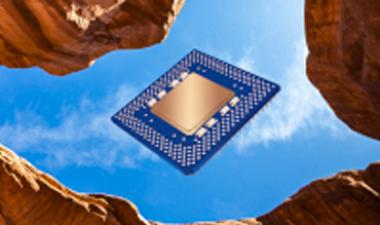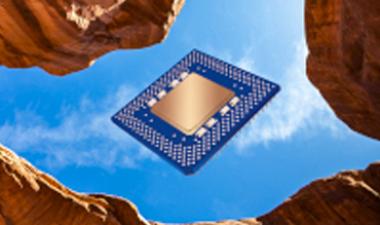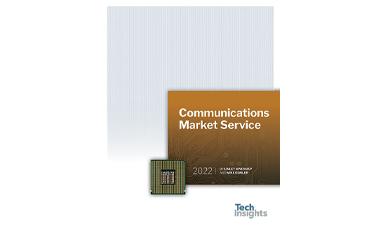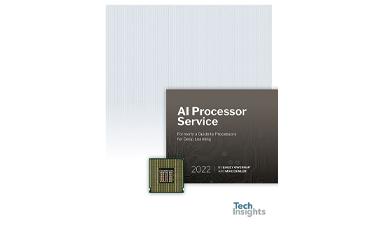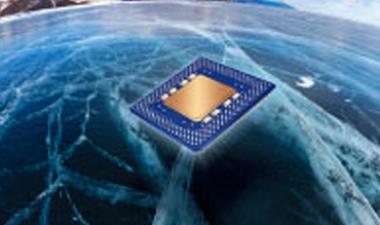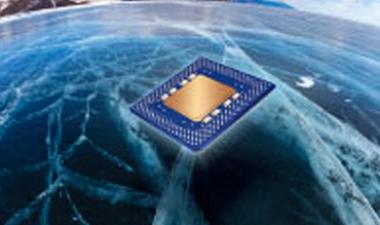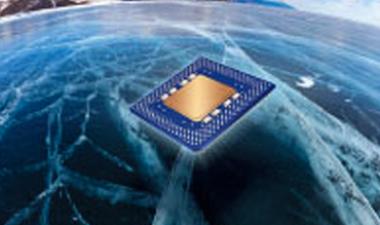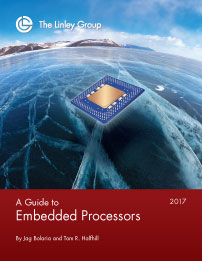
Get the Facts Quickly
"A Guide to Embedded Processors" provides an in-depth look at 32- and 64-bit high-speed embedded processors with one to four CPU cores. This completely revised report from The Linley Group contains about 300 pages of information on AMD, Broadcom (Avago), Cavium, NXP (Freescale), Intel (including Altera and Axxia), Macom, Marvell, Qualcomm, Texas Instruments, and Xilinx.
The report focuses on general-purpose RISC and x86 processors that have one to four CPU cores running at 600MHz or more, excluding specialized architectures (e.g. DSPs, NPUs). Note: some previous editions of this report covered all processors in this category, but this one focuses on chips with four or fewer CPU cores. We cover 32- and 64-bit embedded processors with four or more cores in another report, "A Guide to Multicore Processors."
"A Guide to Embedded Processors" covers Macom’s Helix ARMv8-compatible processors; AMD’s Embedded R-Series processors and G-Series processors; Intel’s embedded Atom, Core, and Xeon processors; Intel's former Altera SoC FPGAs and LSI Axxia processors; Cavium’s Octeon TX and Octeon III processors; Broadcom’s StrataGX, BCM4908, and XLP-II processors; Marvell’s Armada and MoChi processors; Texas Instruments’ Sitara processors; Xilinx Zynq APSoC and MPSoC processors; and other products.
This handy guide, packed with valuable information, brings you up-to-date on the newest developments in this important market and gives you the analysis you need to help choose a supplier or partner in this field. In addition to networking, the report discusses processors that can be used in high-end consumer applications and printers. It also provides market share and market size data for the embedded segments covered.
"A Guide to Embedded Processors" begins with tutorials on the key technologies implemented by these products, background on the embedded market, and a discussion of the newest technology and market trends. Following these introductory chapters, the report delivers thorough coverage of all announced products in this area. For each major vendor, the report examines the performance, features, and architecture of each product, highlighting strengths and weaknesses in a consistent, easy-to-compare fashion. The report concludes with our own comparisons of these products and conclusions about which will fare best.
What's new
Updates to the 10th Edition of "A Guide to Embedded Processors"
"A Guide to Embedded Processors" has been updated to incorporate new announcements made since the publication of the previous edition.
- NXP has introduced new QorIQ LS1-series processors with ARM CPU cores and the first LA-series ARM processor.
- Intel has acquired Altera's SoC FPGAs and has introduced new x86-based embedded processors manufactured with 14nm FinFET technology.
- Among Intel's new products are Goldmont-based Atom processors (Apollo Lake) and Kaby Lake Xeon and Core processors.
- Cavium has introduced new ARMv8-compatible Octeon TX processors.
- Texas Instruments has new ARM-based Sitara processors with integrated DSPs and GPUs.
- Xilinx has new MPSoCs with embedded ARM Cortex-A53 cores.
- Broadcom has introduced its first 64-bit StrataGX processors with Cortex-A57 cores and the 64-bit BCM4908 with Cortex-A53.
- Marvell has new 64-bit Armada processors using its modular chip (MoChi) architecture as well as the AP806 MoChi processor using ARM Cortex-A53 and A72, respectively.
- AMD has introduced its third generation of G series and R series embedded processors. The company has disclosed the new Zen CPU core and will soon roll out the first Zen-based embedded processors.
- 2015-2016 market-size and vendor-share data
- Updated market forecast through 2021
Executive Summary
The simplest definition of embedded processor is a microprocessor for systems other than computers. This report focuses on general-purpose processors with one to four CPUs running at 800MHz or greater. Primary applications include communications and “PC-like” uses. At one end of the scale, communications includes low-cost, low-power systems for home networking, such as Wi Fi routers. At the other end, it includes control-plane processors for service-provider routers. PC-like uses also span a wide gamut, comprising industrial controls, interactive kiosks, digital signs, casino games, and network-attached storage (NAS).
This report analyzes the products, capabilities, and strategies of each vendor to determine which offerings are best suited to each embedded application and which vendors are most likely to succeed. We have researched the offerings from major vendors to gather in one place the information designers need to shorten the list. Among our conclusions are the following:
- Intel remains the leading supplier of embedded processors; we estimate it captured a 48% market share by revenue in 2016. Although processors for PC-like systems account for most of this revenue, the company has been introducing more SoCs for communications. Intel’s newest CPU, Kaby Lake, appears in embedded Core and Xeon E3v6 processors. Atom SoCs generally offer better integration, but the company is only starting to upgrade this family to its newest Goldmont CPU. The 2015 Altera acquisition opens new markets and presents interesting possibilities for new products that integrate ARM and x86 CPUs with FPGAs.
- NXP (by acquiring Freescale) has become the second-largest supplier of embedded processors for communications. It is currently managing a transition from its QorIQ T-series chips (Power Architecture) to its LS-series chips (ARM). NXP’s challenge is to manage this transition without losing customers or market share — while also preparing for a pending acquisition by Qualcomm that’s expected to close in 2H17.
- Qualcomm’s purchase of NXP will make it the second-largest semi-conductor vendor after Intel. This major consolidation will unite their complementary strengths in processor design and in wired and wire-less communications.
- Broadcom has weathered major changes since its 2016 acquisition by Avago. The MIPS64-compatible XLP family is reaching the end of the line, and the company is now focusing on the ARM-based StrataGX family. New products, including the first 64-bit StrataGX chips, bol-ster its offerings.
- AMD has made little progress with its embedded products in recent years. After an unsuccessful fling with a few ARM-based chips, the company is refocusing on its x86 processors. The new Zen CPU core shows great promise in PC and server processors but has yet to ap-pear in embedded products. Meanwhile, the Embedded R-Series and G-Series SoCs must hold the fort.
- Cavium has introduced its ARMv8-compatible Octeon TX family, which supplements its MIPS64-compatible Octeon III family. The new ARM chips compete well against those from other ARM vendors, particularly NXP and Broadcom.
- Macom acquired AppliedMicro in early 2017 but plans to divest the processor business by midyear. Although AppliedMicro was the first to introduce ARMv8-compatible processors, this divestiture creates uncertainty that must be resolved before the products can move forward.
- Marvell’s MoChi (modular chip) family is expanding the Armada portfolio and winning 64-bit ARM designs. We estimate the company’s embedded-processor revenue rose by 11.5% in 2016—a big jump that moves its revenue closer to AMD’s.
- Texas Instruments continues to expand its ARM-based Sitara family and distinguishes itself from other vendors by adding powerful DSP cores, real-time controller cores, and other features optimized for industrial, medical, and military/aerospace systems.
- Xilinx faces tougher competition after Intel’s 2015 acquisition of Altera. To counter Intel’s advantages, the new Xilinx UltraScale+ SoCs add innovative capabilities, such as ARM real-time controller cores, ARM Mali GPUs, and video acceleration to supplement their 64-bit ARM CPUs. Xilinx pioneered this product category but must work hard to sustain its early lead.





